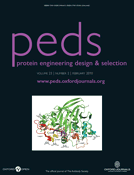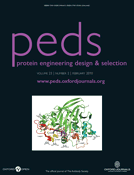
Cover image

cover illustration Structure-guided protein engineering was used to improve the thermostability and activity of cellobiohydrolase Cel7A from a thermophilic fungus Talaromyces emersonii.The five additional disulphide bridges introduced one by one to the structure are shown in the figure (S-S). The S-S bridges were designed in or between the loops extending from the central β-sandwich fold, shown in red (loop 1), blue (loop 2), yellow (loop 3), violet (loop 4), light blue (loop 5) and in orange (loop 6). A triple mutant containing the three best S-S mutations was also engineered, leading to the best variant of 9 °C improved unfolding temperature and efficient cellulose hydrolysis at 80 °C. For further details please see Voutilainen et al. pp. 69-79.

